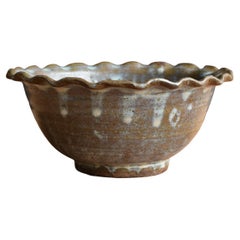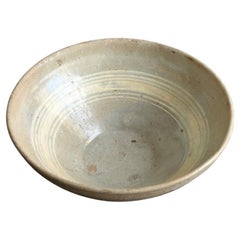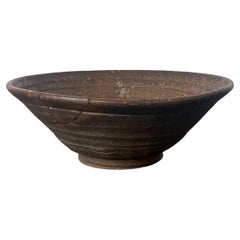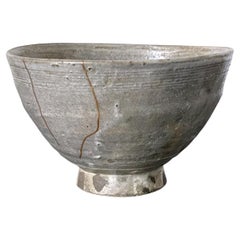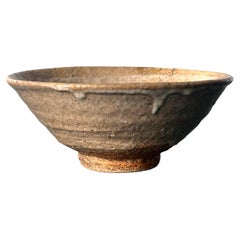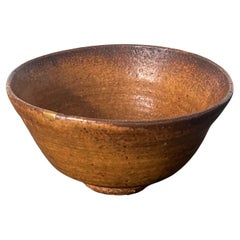Items Similar to Japanese Antique Earthenware Tea Bowl/Edo Period/1700-1800/'Hagi Ware'
Video Loading
Want more images or videos?
Request additional images or videos from the seller
1 of 22
Japanese Antique Earthenware Tea Bowl/Edo Period/1700-1800/'Hagi Ware'
$800
£607.02
€694.07
CA$1,117.38
A$1,242.38
CHF 648.70
MX$15,122.76
NOK 8,277.14
SEK 7,755.29
DKK 5,180.01
Shipping
Retrieving quote...The 1stDibs Promise:
Authenticity Guarantee,
Money-Back Guarantee,
24-Hour Cancellation
About the Item
This is Hagi ware made in the middle of the Edo period.
Hagi ware is a type of pottery that began in Hagi City, Yamaguchi Prefecture in the early Edo period (around 1604). (The places circled in red on the map of Japan in the image are the Hagi ware potteries.)
Hagi ware, which is slowly fired at a low temperature in a climbing kiln, is less hardened and has a soft finish. It is highly water-absorbent, and through the fine cracks on the surface called kannyu, tea and other substances permeate, changing the color and creating a tasteful scenery.
Because the baking is weak, it makes a dull sound when you tap it with your finger.
It is made of thin material and is very light weight when you hold it in your hand.
This tea bowl shows the characteristics of Hagi ware well, and the surface has fine penetrations, and since it has been used many times, tea and other things are soaked in the penetrations, giving it a beautiful texture.
In addition, this pink color is a characteristic color that is often seen in Hagi ware.
There are cracks on the rim of the tea bowl because it has been used for a long time.
This crack has been repaired with lacquer, but only one place circled in red is glued with lacquer and adhesive.
In addition, these days are also very cool with the scenery of wabi-sabi.
The weight of the container is 200g.
As it is very light, it is easy to use.
How about using it with cafe au lait, simmered dishes, rice, etc.?
Recommended item.
A similar item was published in the art book of Hagi ware, so I will post the image here.
Recommended item.
About the Seller
5.0
Gold Seller
Premium sellers maintaining a 4.3+ rating and 24-hour response times
Established in 2015
1stDibs seller since 2020
1,604 sales on 1stDibs
Typical response time: 6 hours
- ShippingRetrieving quote...Shipping from: senzoku, Japan
- Return Policy
Authenticity Guarantee
In the unlikely event there’s an issue with an item’s authenticity, contact us within 1 year for a full refund. DetailsMoney-Back Guarantee
If your item is not as described, is damaged in transit, or does not arrive, contact us within 7 days for a full refund. Details24-Hour Cancellation
You have a 24-hour grace period in which to reconsider your purchase, with no questions asked.Vetted Professional Sellers
Our world-class sellers must adhere to strict standards for service and quality, maintaining the integrity of our listings.Price-Match Guarantee
If you find that a seller listed the same item for a lower price elsewhere, we’ll match it.Trusted Global Delivery
Our best-in-class carrier network provides specialized shipping options worldwide, including custom delivery.More From This Seller
View AllJapanese antique pottery bowl/Tokoname ware/12th-13th century/excavated pottery
Located in Sammu-shi, Chiba
This is a pottery called Tokoname ware.
Tokoname is a kiln located in Aichi Prefecture, Japan (Tokoname Kiln is marked with a red circle on the map).
It is said to have originated ar...
Category
Antique 15th Century and Earlier Japanese Other Decorative Bowls
Materials
Pottery
Japanese antique pottery bowl [tokoname ware]/Tokoname ware/12th-13th century
Located in Sammu-shi, Chiba
This bowl is made from Tokoname ware, a type of pottery from Aichi Prefecture. Tokoname ware has a history dating back to the 12th century, and there are still several active kilns t...
Category
Antique 15th Century and Earlier Japanese Other Antiquities
Materials
Pottery
Antique pottery bowl from Kumamoto, Japan / Shodai ware / Edo / 18-19 thcentury
Located in Sammu-shi, Chiba
We have a unique Japanese aesthetic sense.
And only we can introduce unique items through our purchasing channels in Japan and the experience we have gained so far, in such a way that no one else can imitate.
It is speculated that this pottery was fired in the Shodai kiln in Kumamoto Prefecture during the Edo period, around the 18th century to the first half of the 19th century.
It is characterized by the use of iron-rich clay and the appearance of a white glaze that looks like falling snow.
As a feature, using clay with a lot of iron,
It is characterized by a white glaze that looks like snow.
This vessel is made with two types of glaze.
One is straw ash glaze and the other is rice husk ash glaze.
This rice husk ash glaze changes to a white glaze.
This pot is very beautiful with a petal-like rim.
However, there is one spot where the crack has been repaired.
The part marked with a red arrow has been broken once, but it seems to have been glued later.
Therefore, it will not leak even if you put water in it.
It's not very noticeable so I wouldn't worry about it.
This Shodai ware was made in Kumamoto Prefecture and was used there, so there are not many items in Japan.
It is a rare item.
Also, a wooden box is included, but it says "Karatsu ware...
Category
Antique Mid-18th Century Japanese Edo Serving Bowls
Materials
Pottery
Korean antique pottery bowl/15th-16th century/Joseon Dynasty
Located in Sammu-shi, Chiba
This is a piece of pottery made during the early Joseon Dynasty of the Yi Dynasty in South Korea.
This tea bowl, which was made around the 15th century, was used by common people and...
Category
Antique 15th Century and Earlier South Korean Other Pottery
Materials
Pottery
Japanese antique vertical striped tea bowl/19th to early 20th century/Seto ware
Located in Sammu-shi, Chiba
This is a Seto ware tea bowl made in Japan from the late Edo period to the Meiji period (late 19th to early 20th century).
Seto is a kiln with a long history in Aichi Prefecture, Jap...
Category
Antique Late 19th Century Japanese Edo Pottery
Materials
Pottery
Japanese antique pottery bowl/[Banko ware] Mie prefecture/1850-1912
Located in Sammu-shi, Chiba
Banko-yaki is a type of pottery that began in the northern part of Mie Prefecture in the middle of the Edo period. (The places marked with red circles on the map are the kilns of Banko ware...
Category
Antique Late 19th Century Japanese Edo Pottery
Materials
Pottery
You May Also Like
Korean Ceramic Kakinoheta Chawan Tea Bowl
Located in Atlanta, GA
A "Kakinoheta" type ceramic chawan (tea bowl) made in Korean during Joseon dynasty circa 16th-17th century. The bowl has a slight irregular flat shape w...
Category
Antique 17th Century Korean Other Ceramics
Materials
Ceramic
Korean Gohon Chawan Tea Bowl for Japanese Market Joseon Dynasty
Located in Atlanta, GA
A ceramic chawan (tea bowl) circa 17-18th century fired in the Busan kiln in Korean specifically for the Japanese market. The kilns were run by the So c...
Category
Antique 17th Century Japanese Edo Ceramics
Materials
Ceramic
Korean Ceramic Ido Tea Bowl Chawan Joseon Dynasty
Located in Atlanta, GA
A ceramic stoneware chawan tea bowl made in Korea circa 16-17th century. The chawan is identified as Ko-ido (small ido) due to its size and form. Ido bowls were made since 15th centu...
Category
Antique 17th Century Korean Other Ceramics
Materials
Ceramic
Korean Ceramic Irabo Tea Bowl Chawan Joseon Dynasty
Located in Atlanta, GA
A ceramic chawan tea bowl made in Korea for Japanese market circa 17th century. The chawan is identified as Irabo type. Irabo bowls were essentially con...
Category
Antique 17th Century Korean Other Ceramics
Materials
Ceramic
Korean Ceramic Ki-Irabo Tea Bowl Chawan Joseon Dynasty
Located in Atlanta, GA
A ceramic chawan tea bowl made in Korea for Japanese market circa 17th century. The chawan is identified as Ki- Irabo type (Yellow Irabo). Irabo bowls w...
Category
Antique 17th Century Korean Other Ceramics
Materials
Ceramic
Shinbei Sakakura X (10th) Japanese Hagi Yaki Ware Pottery Chawan Tea Bowl & Box
Located in Studio City, CA
A wonderfully hand crafted and beautifully glazed Hagi Yaki Ware Chawan tea bowl by the 10th Shinbei Sakakura (X). This piece has quite a special feel to it. The Chawan radiates i...
Category
Antique Mid-19th Century Japanese Edo Ceramics
Materials
Pottery, Stoneware
More Ways To Browse
Japan Ware
Japanese Earthenware
Japanese Containers
Pink Water Glass
Antique Pink Bowl
Antique Fire Bowl
Antique Japanese Tea Bowl
Pink Antique Dishes
Red Glass Antique Dishes
Lacquered Japanese Bowl
Japanese Lacquer Ware
Antique Water Tap
Hagi Ware
Red Lacquer Ware
Italian Pottery Mugs
Glass Olive Jar
Large Crock
Oaxaca Black Pottery
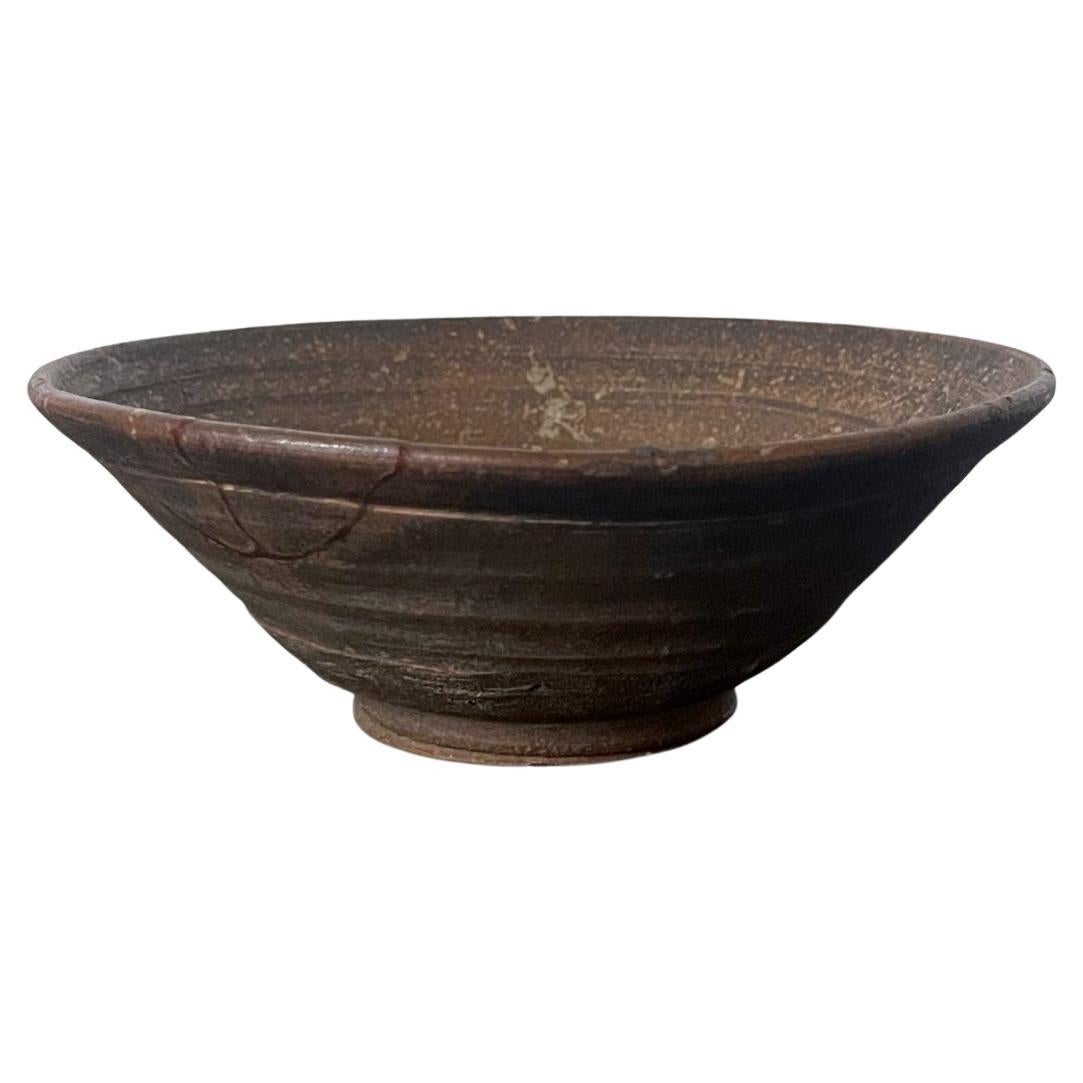
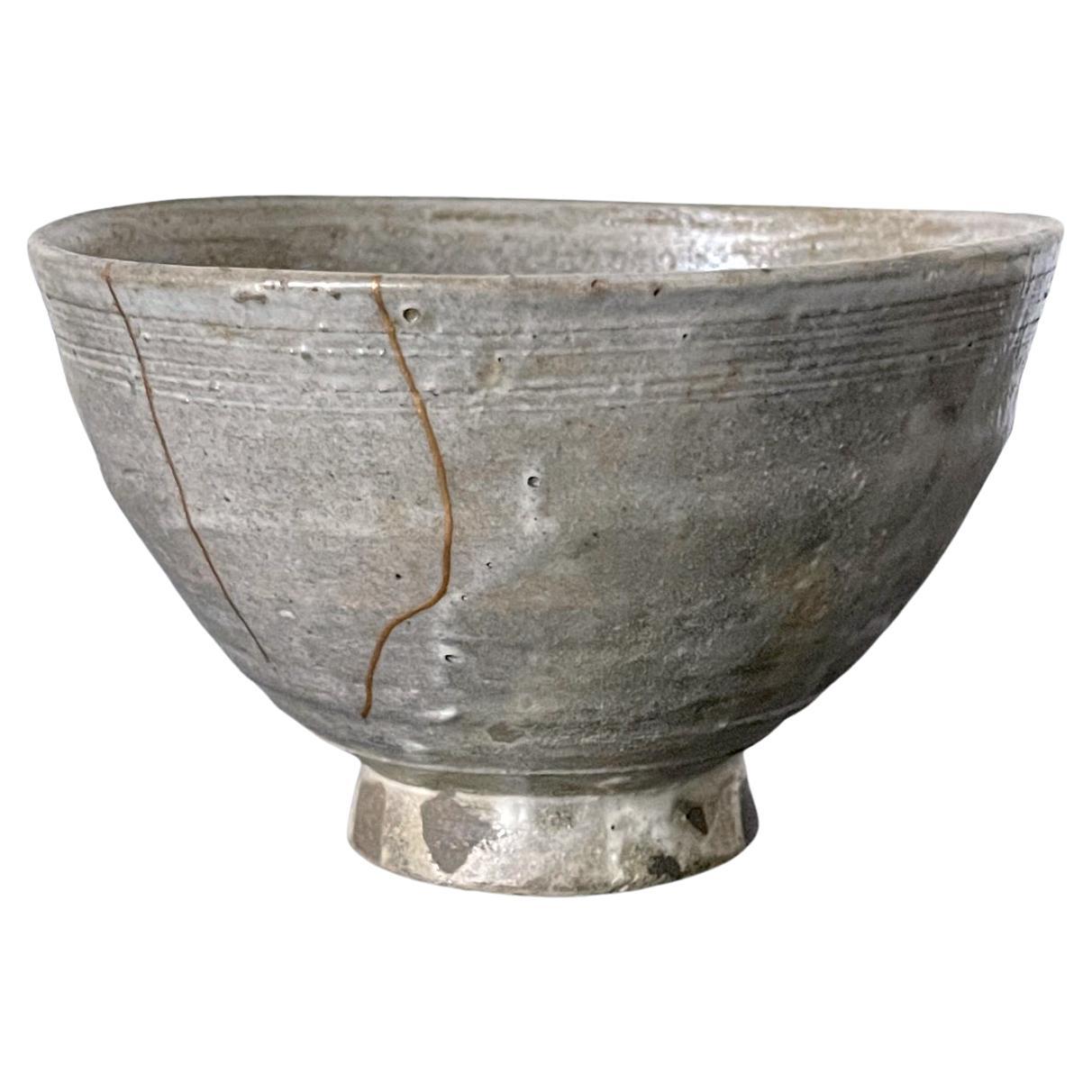
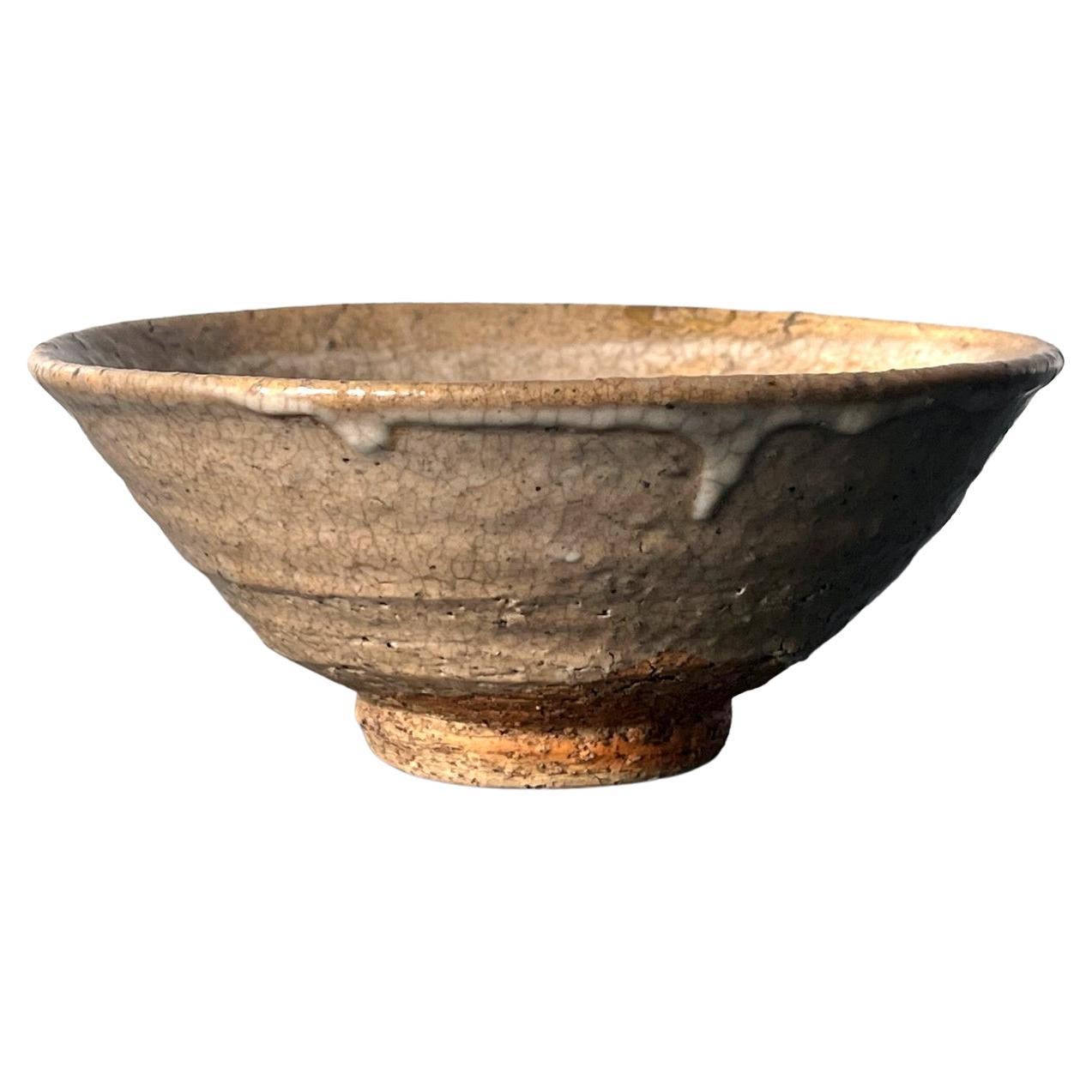

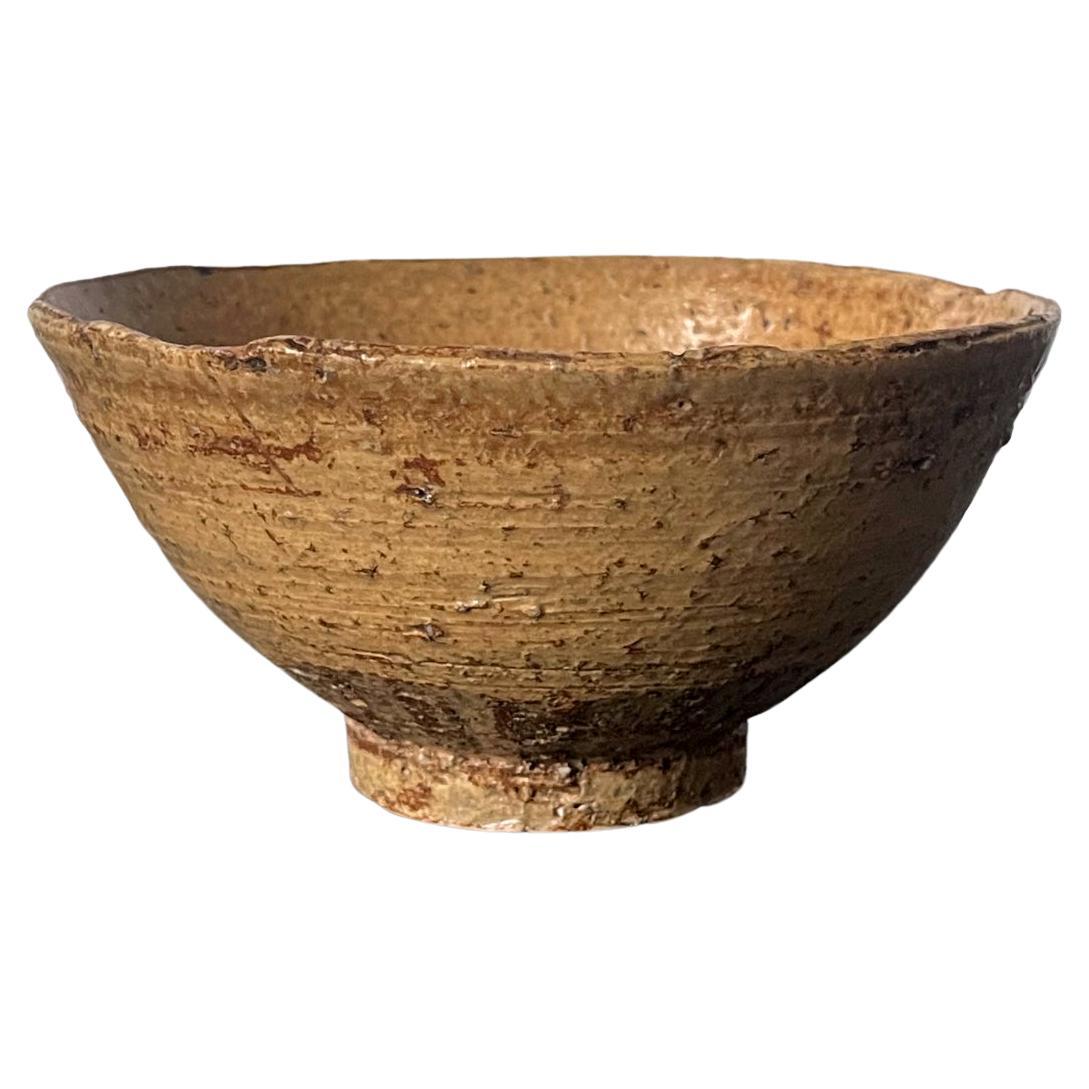
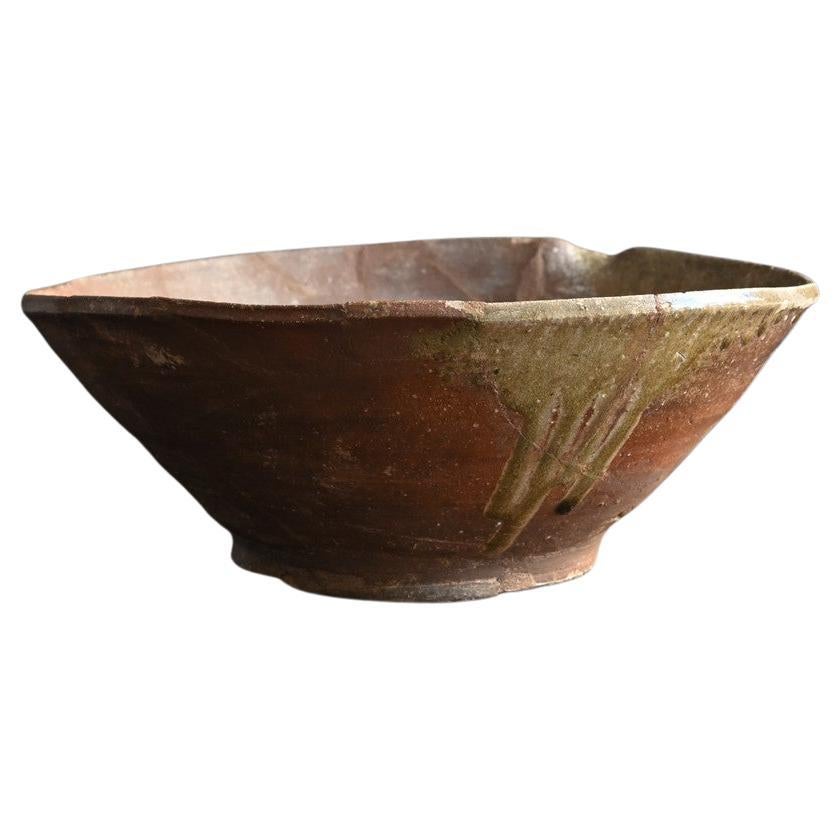
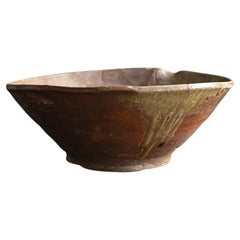
![Japanese antique pottery bowl [tokoname ware]/Tokoname ware/12th-13th century](https://a.1stdibscdn.com/japanese-antique-pottery-bowl-tokoname-ware-tokoname-ware-12th-13th-century-for-sale/f_54872/f_438190121740644008945/f_43819012_1740644009233_bg_processed.jpg?width=240)
